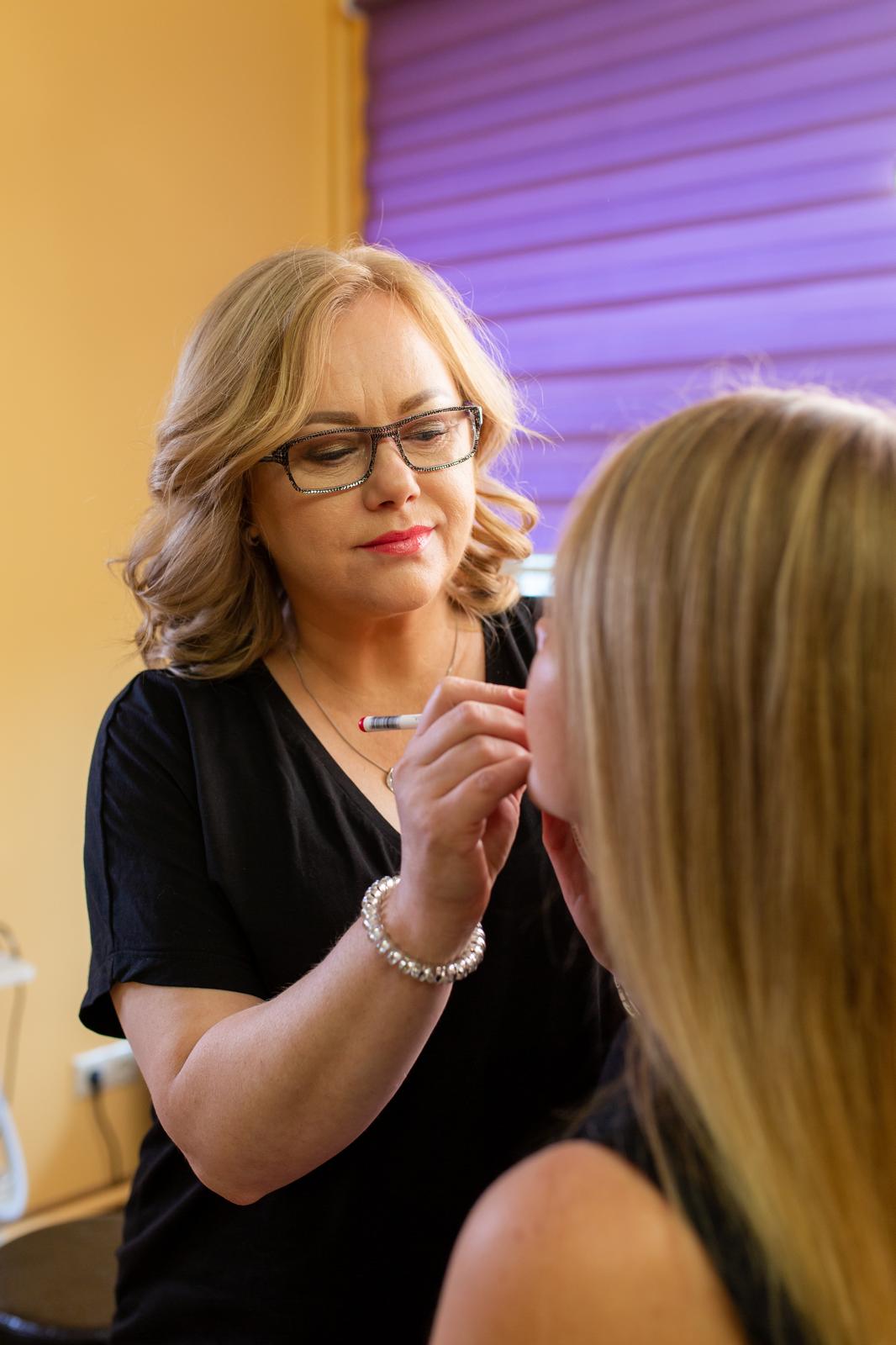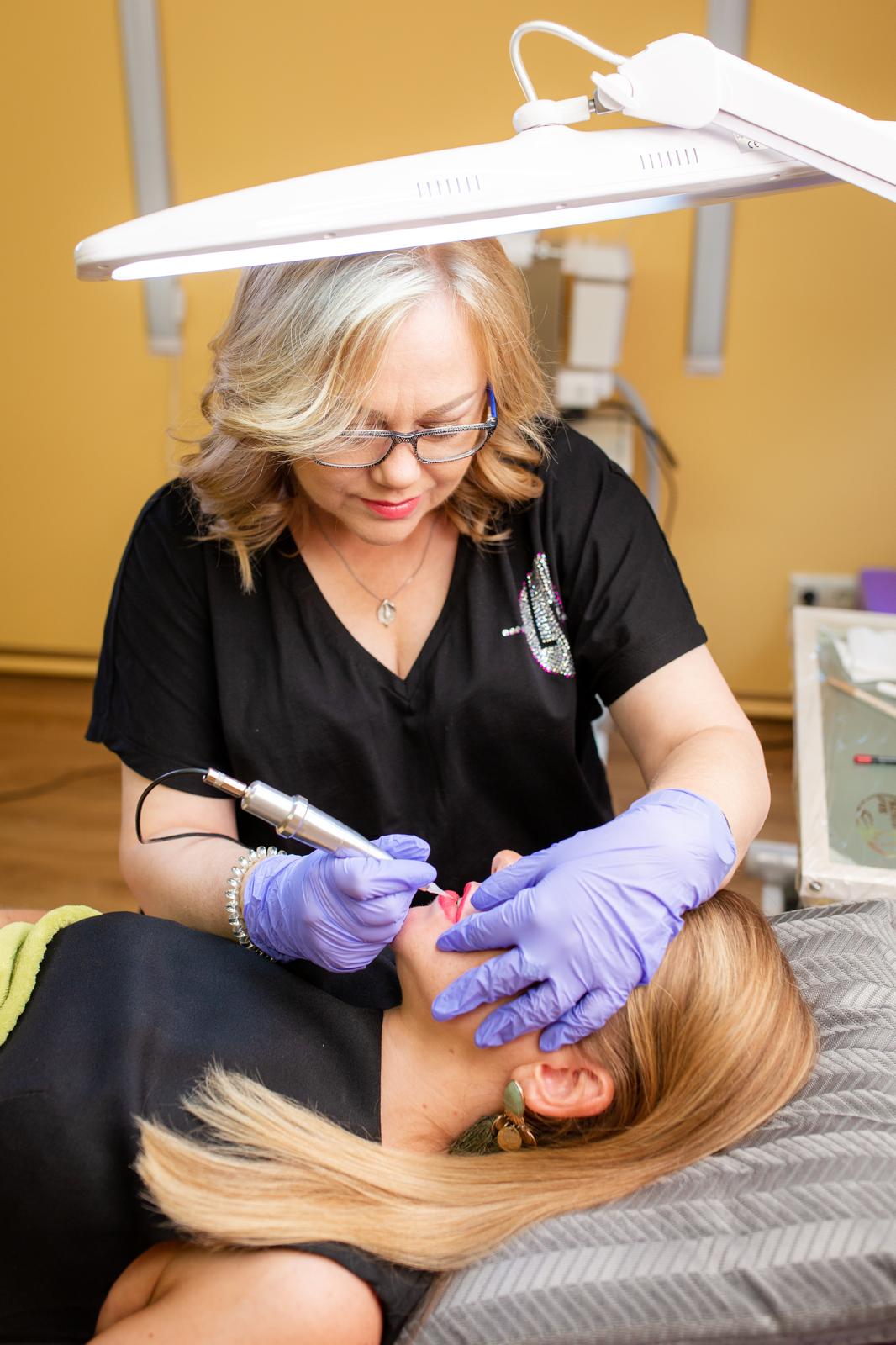What is permanent makeup?
Permanent make-up is the most popular and sought-after procedure today.
The main task of permanent makeup is to highlight your natural beauty, your individuality, or even to hide or correct what you want.
Permanent makeup is a great way to save your time, because it is the most expensive for us. It is also a way to feel good about yourself, self-confidence and your beauty. Permanent makeup can give you all this, because you will look attractive at any time of the day. Permanent makeup is permanent and sustainable makeup for your face.
Permanent make-up is micro-pigmentation, which is carried out very carefully and with extreme precision, so it is very important to choose a master with high professionalism who will advise you and answer all your questions, as well as come with his advice and recommendations.

What is micropigmentation?
Micropigmentation allows highlighting the main features of a woman’s face – eyes, lips and eyebrows. In the process of micropigmentation, pigment is injected into the upper layer of the skin from 0.3 to 0.5 mm, which means that the skin is traumatized very minimally. The procedure is performed with a very thin needle, special hardware and a selected palette of gamuts. Anesthesia is used in the process, which allows the micropigmentation procedure to be performed as painlessly and as comfortably as possible for the client. The result of the procedure will please your eyes and attract the attention of others.
Permanent make-up process - in stages.
Consultation with the master – a professional, he will guide you in the right direction, tell you about his vision and listen to your wishes in order to successfully reach a common compromise so that you get an excellent result that will successfully highlight the main highlights of your face.
During the consultation, we choose the main accents – shape, color – in accordance with the principles of color and makeup and the relevant proportions, based on your individual facial features, which is a very important stage in the process to achieve the maximum result of your transformation using the micropigmentation procedure.
Before micropigmentation, a sketch is made. After coordinating the sketch with the client, we come to the next stage, which is an integral part of the procedure – anesthesia is performed, which allows the procedure to be performed as painlessly as possible.
The next stage of the procedure is the micropigmentation itself, which completely depends on the master you choose, his skills and professionalism.
After the first procedure, it is recommended to perform an additional correction within one to three months.
Need an adjustment?
It depends on the client’s skin type and the percentage of pigment remaining in the skin. Correction is performed if the client wants a more decorative and saturated effect after the permanent makeup procedure. On the other hand, if the client wants a more natural effect, correction is optional. After the first micropigmentation procedure, 30% of my clients do not need correction.
Before the procedure, it is not recommended:
– Sunbathe and visit the solarium;
– Cosmetological procedures – face cleaning, peeling, epilation;
– Use caffeinated products, alcohol and aspirin.
After the procedure, it is not recommended to:
– Sunbathing, visiting the solarium;
– Exposure to the area of permanent makeup (rubbing, scratching, scraping, tearing off crusts, also cosmetic procedures);
– After the procedure, avoid any long contact with water (sauna, sauna, swimming pool) for about two weeks.
It is recommended to follow the specialist’s recommendations and use special creams/ointments suitable for the healing process to soften the skin after the procedure.
Permanent make-up technology associated with trauma to the skin’s top layer, blood vessels and nerve endings. If the procedure is done correctly, swelling and redness may last from a few to 24 hours. If the swelling lasts longer after the procedure, the procedure was performed too traumatically, which depends on the master’s qualifications, knowledge and professionalism. Of course, people’s pain threshold is noticeably different, however, thanks to effective modern anesthetics, the procedure can be performed practically painlessly for everyone.
Contraindications for the procedure:
Allergic reactions, disorders in the blood coagulation system (hemophilia), disease of the blood and hematopoietic organs (leukemia), malignant tumors, epilepsy, HIV and AIDS, non-insulin-dependent diabetes mellitus, psychiatric disorders, predisposition to the formation of keloid scars, any disease in the exacerbation stage and decompensation.
Relative contraindications:
Excessive arterial pressure, pregnancy and breastfeeding, stages of herpes exacerbation, dermatitis and acne in the area of permanent makeup, menstruation, the influence of alcohol or narcotic substances, tendency to inflammatory diseases of the eyes.

